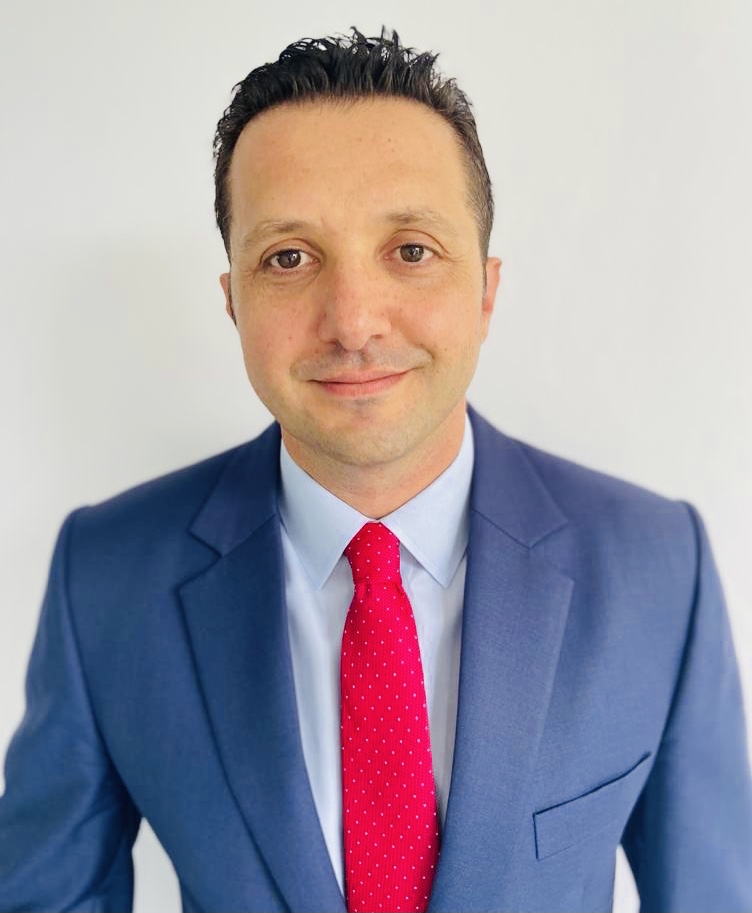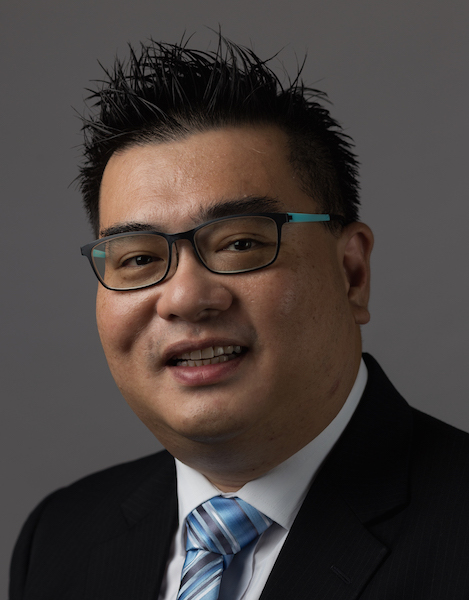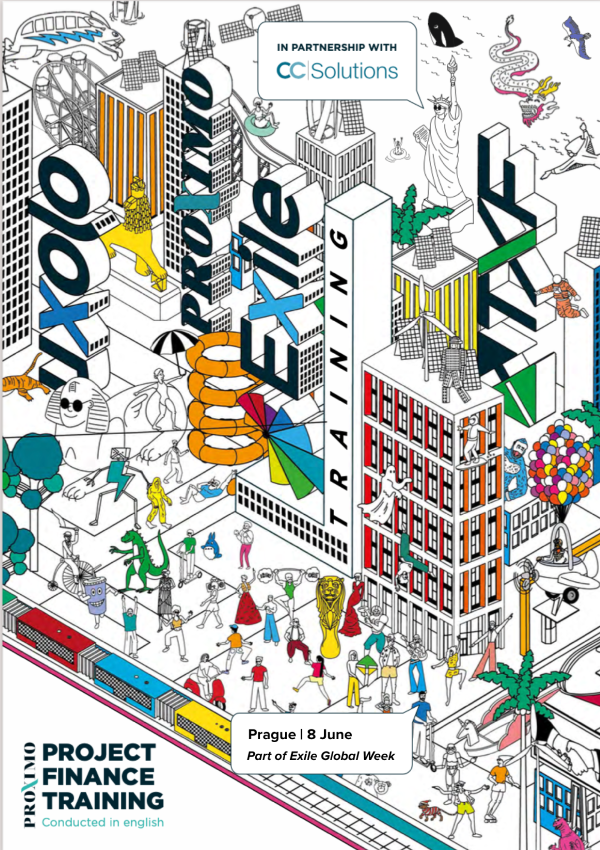What price Asia’s energy transition?
Are Asia’s financial markets – not to mention its power markets – in good enough shape for the energy transition? With the support of Texel as event sponsor, Proximo assembled a group of regional experts to find out.

Asia is increasingly in the front line of efforts to decarbonise global energy markets. The region’s impressive growth has been built on carbon intensive industry, and acute government attention to energy security. A shift to renewables potentially involves big political and cultural shifts.
There has not been a lack of initiatives for mobilising financing for the transition. The region’s development lenders have been active in promoting credit enhancement and debt recycling products. There’s even a newly-minted platform – the Energy Transition Mechanism – devoted to retiring coal plants.
So matching capital providers to the right projects, and making sure governments put supportive structures in place, are key priorities for the region, according to the panel of experts that Proximo assembled in late December 2021.
Panellists

Mark Houghton, head of specialty, Asia, AXA XL

Pingyang Li, senior vice-president, business development, Engie Hydrogen

Kevin Liu, head of energy and low carbon transition, Asia Pacific, Scottish Development International

Tim Meaney, country head, Philippines, UKEF

Steve Mercieca, co-head project and export finance, ASEAN and Australia, Standard Chartered

Victor Ong, deputy global head, portfolio management, capital risk solutions, AXIS Insurance

James Orme, partner, project, energy and infrastructure finance, Milbank

William Shaw, managing director and founder, Texel Asia

Ray Tay, senior vice-president, Moody's Investors Service
Benny Zachariah, senior investment officer, AIIB
Proximo: How would you describe the supply of local currency financing for renewables in Asia-Pacific, and how common are local currency power purchase agreements?
Steve Mercieca, Standard Chartered (SM): When we look at Asia, underlying countries have different sovereign credit ratings. In Singapore, Philippines, Malaysia, Thailand, there's a very strong local currency debt market, but in Vietnam and potentially Indonesia as well for example, the depth of the local currency market will challenge the investor’s ability to maximise their investment over a long tenor. If you're looking at a greenfield renewables asset, typically with a 20- to 25-year PPA, that project has to maximize the benefit of that underlying long duration PPA. Unless local currency markets can provide long-tenor financing at rates that are economical, then USD would still be the optimal debt currency (subject to PPA indexation for example). USD denominated debt would enable the investor to extend debt tenors, particularly when including risk mitigants, such as an MDB guarantee / B loan or an ECA structure.
James Orme, Milbank (JO): Local currency PPAs have historically been difficult to finance for the primary reason that project costs – namely, EPC costs or other large equipment costs - are often sourced offshore and paid for in US dollars. A PPA tariff will need to cover those costs and having the tariff and the project costs denominated in the same currency makes things simple. Markets such as Indonesia, Bangladesh and Sri Lanka have all developed with US-denominated PPAs. That said, we are starting to see a number of markets in Asia with local currency PPAs and sponsors and lenders alike have been able to get comfortable with this – the Philippines and Taiwan being two of the most high-profile examples of this. Another interesting feature has been the increasing frequency that regional domestic banks are now participating in renewable energy projects in Asia. This is sometimes due to a relationship with the sponsor involved in the deal but also because regional commercial banks have increased liquidity that they want to put to work. The ability of these regional commercial banks to fund in local currency helps support non-US dollar denominated PPAs. That all said, while having a local currency PPA is something that can be, and has been, banked, for the very large power deals having a US dollar tariff may, on balance, give a sponsor more options in terms of how to finance its project and may also potentially result in a simpler financing structure.
Ray Tay, Moody's (RT): The offshore project bond market in Asia-Pacific continued to grow despite COVID, and renewables has been driving that, especially in India, where PPAs are local currency denominated. Issuers manage the forex risks using hedges and structural mechanisms. We've even seen long-term amortising debt raised for the sector, and we expect to see more issuances.
Tim Meaney, UKEF (TM): In the Philippines a Peso-denominated receivables base is a fundamental component of any power project whether PPA supported or merchant. This reflects a maturity in the Philippine banking market, which 20 years ago was more dependent on offshore banks to offer structuring skills and raise long-term finance. There is now a growing local peso-denominated bond market, thanks to the SEC [the country’s securities regulatory agency] which has placed an emphasis on green bond issues. The central bank is also supporting commercial banks by giving regulatory relief to long-term project finance transactions. Regarding PPA’s, I believe that in the current market 100% of the various PPA formats that exist are Peso denominated and supported by Peso financing. The Philippines corporate sector is somewhat concentrated with a small group of large conglomerates dominating across a number of sectors including power generation. This may give rise to single borrower concentration issues. However regulators have increased those single borrower limits from 25% to 30% to reflect the unique circumstances created by the pandemic. For the future, offshore wind is potentially going to be a very significant energy source in the Philippines, potentially as much as 40GW of installed capacity by 2040. Almost inevitably, the initial offshore wind power purchase agreements will require a specially designed contractual framework together with very significant onshore investment to support development.
Victor Ong, Axis Insurance (VO): Multilaterals have utilised their triple-A rating to raise low cost local currency bond financing to lend to projects, whether in India or Thailand. ECAs and Multilaterals through guaranteeing local currency debt, can crowd in new lenders such as insurance companies or local banks which are not familiar with project finance, particularly construction risk. As a credit insurer which specialize in project finance with a good understanding of the construction process from factory to site, and can also take local currency exposure, we are reinsuring or insuring the ECAs and multilaterals which thus increase their capacity for local currency lending or guarantees.
Mark Houghton, AXA XL (MH): Local currency power purchase agreements are becoming more common in this region as a natural hedge against currency movements, so logically local utilities would prefer to minimize these risks wherever possible. In recent years we have been working with customers to come up with a suitable insurance product that would enable them to deploy local currency holdings into renewable or other infrastructure projects in this region. The common obstacle for these firms to deploy local currency is the sub investment grade sovereign ratings for the countries they are targeting, noting these firms have quite specific investment mandates. The political risk insurance market has strong appetite for country risk, including currency risks, and the challenge we have is trying to find a viable way to combine the country risk coverage with the available local currency funding to enable the firm to invest in renewables or other projects. Ideally the coverage would provide an enhancement to the project rating which would enable them to meet their investment mandate. Attracting international investors to local currency financing will continue to be challenging given the geopolitical tensions which remain high in the Asia region, but there are some good success stories in the region where domestic financiers have stepped up to support the local market in the absence of international investors.
SM: As another example of a liquid local market in North Asia, it’s been possible to raise NTD for all of Taiwan’s offshore wind farms and solar PV assets, and Japan and Korea both have strong local liquidity being raised for similar renewable energy assets. On the backdrop of a local currency PPA, raising local currency financing would be ideal particularly in avoiding FX mismatch and mobilising long-term local currency financings.
Proximo: What is the outlook for the use of blended finance structures such as the recently-announced Energy Transition Mechanism in Asia?
Benny Zachariah, AIIB (BZ): The concept of accelerated coal retirement and phaseout is topical and is an interesting idea, but there are still a lot of questions. It’s important to ensure that coal-fired generators are not receiving the wrong incentives and that they're transitioning into greener energy. Those pilots will hopefully start answering a lot lingering concerns and I applaud our peers for taking on something so controversial, though it's not the only platform pursue the climate change agenda. IRENA announced the Energy Transition Accelerator Financing platform, ETAF, at COP26, which is a collaboration with the government of the UAE. It involves using blended finance techniques by working with grant organisations to make climate finance projects more bankable and sustainable. The AIIB has also contributed a lot through our Sustainable Capital Markets initiatives in terms of creating a climate investment framework that will help institutional investors identify develop issuers into climate champions while catalysing and mobilising investment. We’ll need all sorts of platforms and sometimes we’ll need to try and see if the innovative solutions can work.
RT: We’ve had, in the past few months with coal supply issues in parts of Asia or high oil and gas prices, a glimpse of what a disorderly transition might look like. Thermal generation assets remain critical to APAC's power generation markets, at least for the next few years, due to their size and predictability. Renewables will need to grow at a multiple to displace coal capacity, because of the plant load factors at which renewables typically operate, and we’ll need complementary grid and storage investments. ETM projects with dollar-linked revenues could be candidates for dollar bond issuances. I note that the ADB is thinking of doing a pilot of five to seven projects over the next two to three years and it will be great for the sector if it moves from pilot to being programmatic.
TM: Any initiative that reduces the Philippines' dependence on coal fired power, which accounts for over 50% of generation, is positive and very welcome. But investment in grid stability and connections is also vital. The Philippines’ Department of Energy has been highly pragmatic in moving forward with a brownfield 1,000MW run-of river rehabilitation project [Agus – Pulangi] as the replacement generating capacity. One point to note is that unlike many Asian countries the Philippines does not have a national utility per se. this factor will definitely affect the way in which existing coal plants (which are principally in private hands), are retired.
Kevin Liu, Scottish Development (KL): These initiatives still leave a bit of a gap in terms of removing some of the early mover risks that a lot of developers, particularly of new technologies, are experiencing. A lot of the financing mechanisms we've been talking about are development stage, whereas we're seeing developers asking for advice on how to secure the first million to pay for a feasibility study to persuade a national utility that their technology works.
JO: The recently announced Energy Transition Mechanism has two parts – the first part is devoted to retiring or repurposing coal-fired plants and the second part involves investing in clean generation, storage and grid upgrades. It is this second part that I think is probably more easily implemented, at least in the near term. There are numerous examples of private sector investment in clean energy and energy storage projects and so hopefully this just continues to grow. The reason the first part may be more challenging to implement is because approximately 90% of the world's coal fired power plants that are 20 years or younger are located in Asia. Further, Asia produces approximately 75% of the world's coal while consuming around 77% of it. This is simply a huge amount of baseload energy to either retire or repurpose quickly. Another feature of a number of coal-fired power plants in Asia is that they often come with long-term PPAs and profitable PPAs meaning they are very desirable assets to hold. The M&A activity in the coal sector evidences this. As such, while the Energy Transition Mechanism is very exciting for the renewable energy market, its implementation may take time. That’s fine though because the Energy Transition is called a “transition” for a reason and it is not a case of just simply flicking a switch to move from fossil fuels to a carbon neutral energy world.
Proximo: What roles do batteries, hydrogen and carbon capture have to play in the medium term in the region?
Pingyang Li, Engie (PL): A battery as a relatively short-term energy storage solution can help to smoothen the duck curve. Hydrogen is the enabler for deep electrification and deep decarbonisation. CCUS is an important contributor to decarbonisation. In order to use these technologies to realise the full potential of renewables and to decarbonise the economy, it requires a few elements. The first is that energy prices need to be transparent and variable, because that will create an opportunity for the energy storage business model. Given that in Asia the electricity price is still largely regulated, i.e. there is no instant or even day-ahead market, there is a lack of a business model for an independent energy storage project to realise its value via the market. The second is that the grid needs to be substantially smarter, with more sensors, more digitalized and more automation, to increase flexibility or remove constraints. The third is that technologies need to improve in efficiency and reduce their costs. CCUS needs an additional element that is the social acceptance, in case CCUS is used to perpetuate the use of fossil fuels. Capturing and storing CO2 is often a big project which requires carbon prices to be maintained at a high level to enable such big ticket investment decisions.
Proximo: Do you think the models are available to finance storage like transmission assets? Do you think there are transmission operators that can afford to pay for it?
PL: Yes. Grid operators are installing battery storage systems as a part of the grid, for example in Thailand, in China, etc. These grid operators’ business model is a regulated return rate applied to the investment amount. Grid operators may install such assets with their own balance sheet first, and later they may tender out some part of these types of projects on capacity payments, as they could tender out peaker power plants.
MH: In Asia, there is still a lack of incentivisation for storage solutions given the level of financial commitment and support provided by state owned power utilities for their existing generating capacity available from hydro, geothermal, gas and coal assets. There has been strong investment in generating capacity over the last 20 years and this has drastically increased electrification rates in many Southeast Asian countries. However, transmission reliability and grid connectivity are still being developed, and their development is critical to having effective storage solutions in country. Storage should, in theory, be highly effective in Southeast Asia given the volume of hydro assets in operation, and the challenges which exist for grid connectivity across difficult terrain and island networks. The question will be whether these countries have sufficient financial resources available to emerge from the stress COVID has inflicted on their economies and also to meet the growing pressures of a changing climate.
VO: The intermediate step to get there is to embed storage within generation, because the grid is not ready to take so much intermittent power. You could have a situation like the duck curve problem in California where curtailment risk is significant. So in India, tenders have been issued for projects that combine storage with solar or wind for around the clock generation as a way to stabilise the grid. Thus storage becomes less like transmission and more like generation. Until there is a capacity market in Asia, treating it as a utility makes the most sense.
Proximo: What sort of early-stage capital is most in demand in Asia?
KL: National utilities are beginning to look at nascent technologies in distributed settings. Whereas national policy has been geared towards building a national grid and big infrastructure projects. There is now more of an acceptance of microgrids and distributed systems. Indonesia is now trialling tidal energy, though tidal remains very difficult to raise funds for. It will be extremely difficult for any government to electrify its way to net zero, so the debate about choosing between electrons and molecules shouldn't even be a debate. Clean baseload power will be difficult to achieve, so some Southeast Asian countries are now looking at nuclear again as a baseload option. Hydrogen should emerge as an alternative fuel to diesel and petrol, particularly in immediate applications like buses.
Proximo: Is carbon capture potentially a way to extend the life of coal plants, given the pressure that utilities could be under to retire them?
TM: Given the Philippines' overdependence on coal, and its commitments to halt the development of new coal plants, I would be surprised if Napocor extends the life of privately developed build-operate-transfer plants that are being handed back to it as on the expiry of PPA/ECAs for any reason other than a lack of alternative power. Many of these plants were developed after the brownouts of the late 90s and their offtake agreements are close to expiration. They will ultimately be replaced by renewable sources, and particularly offshore wind, once the grid is structured to support its development.
Proximo: Where is the market going for new non-bank lending sources such as Bayfront?
William Shaw, Texel (WS): I think they have a number of benefits, including the ability to churn capital and access new investors, and gaining the credibility of institutions like the AIIB as well. But there has also been a very significant shift towards project finance in the insurance business, largely in following the appetite of project finance banks - however a lot of the project financings in Asia-Pacific are a little smaller than their counterparts in Latin America and Africa. New structures should allow for far greater infrastructure and project finance development because the investor base and liquidity available is significantly higher. And given how active particularly the AIIB, but also the ADB have been, Asia should be able to match the levels of DFI activity we have seen in Latin America, in Africa and in parts of Europe.
BZ: We're very excited about what Bayfront is doing in Asia, and that is attracting a lot of attention because of its securitisation of infrastructure backed assets. The securitisation market is a potential solution to Asia’s infrastructure financing gap by providing an instrument for institutional investors to access emerging market infrastructure assets in bite-sized amounts with diversified exposure across multiple projects. There are a lot of other tools that are already in place at IFIs and MDBs, and these are designed to encourage banks – which are already dealing with Basel regulations and other constraints on long-term project finance lending – to look at sectors and economies that they are not familiar with. A lot of this can come from MDBs using their environmental and social diligence requirements to serve as an anchor for bond or loan financings. The AIIB has its own debt guarantee product, which is similar to many of our peers, and we’re looking at where the constraints are, whether it’s tenor, sector, or country. We've got to prove additionality, find out what the market disconnect is and demonstrate or share how can we help solve it, because it’s clear that the bank market will not be enough to solve the infrastructure gap and we need to develop other lending sources.
RT: The prospect of non-bank lending like what we have seen in Bayfront is supported in the market, given the investor appetite and policy makers’ efforts to crowd in private capital. Transactions such as Bayfront will help enhance institutional investor familiarity with the infrastructure sector in Asia and enhance funding diversity. Investors’ ability to diversify across infrastructure sector, geography and credit quality will make both the Asian infrastructure corporate and project bond markets more robust.
TM: DFIs and MDBs should be supporting governments in their ambition to deliver more bankable and scalable projects particularly emphasising sustainable and climate resilient projects. Bankability is the perennial problem in the region. MDBs can focus on regulatory frameworks (including incentives), capacity building, developing liquidity and transparency, and on supporting performance undertakings, particularly where government obligations under concessions may be stressed because of the COVID impact. Thereafter the availability of a broader range of credit enhancement tools (including first loss guarantees etc.) would be welcome. Achieving lower funding costs using blended finance solutions at scale would also be a positive development.
Proximo: What other methods are there for mobilising capital in the region?
MH: The private insurance market can be very innovative and helpful in addressing gaps in infrastructure finance and has evolved its capabilities in recent years to adapt to the demands of its customers. For example, accepting the risks associated with power purchase agreements for renewable power projects in Vietnam was very difficult for many years, but financiers developed creative solutions to support these projects like SBLCs [standby letters of credit] and other risk allocation structures. Five years ago, we would be cautious about accepting a 10-year SBLC risk for a Vietnamese bank, but our risk appetite has shifted as the market evolved and we have had an opportunity to see these structures perform Further, increased experience around defaults in this region would further demonstrate the viability of the structures being used. Maybe we are breeding overly conservative investment behaviour, but infrastructure finance works in different ways compared to traditional investments and has proven to be a reliable asset class. Default frequency on project finance is estimated to be around 10-15% and has proven levels of recovery of around 80%. Over the last two COVID years we have seen growing supply chain challenges and delays creating complications for many projects, this will also offer an opportunity to test and review these updated deal structures and build investor confidence in evolving sectors, such as climate finance. Project owners are leaping quickly into these evolving sectors and developing innovative technology at breakneck speed to meet increasing ESG targets, which undoubtedly will raise new issues and challenges which the next generation of financiers will need to address. Multilateral and government agencies have provided a highly dependable platform over many years to develop this business, and we are potentially reaching the point where they need to start tapering the nature of their support so that existing and future investors can redefine their risk appetite and promote greater private sector involvement in such projects based on the experiences they have been developing in recent years. This may go some way in building confidence amongst long term investors like insurance companies to develop their Asian risk appetite further.
WS: There are still massive holes in liquidity, not just in project finance in Asia, but also in the financing of trade, which is the bread and butter of our whole economy. In previous crises it was the ECAs and DFIs stepping in where banks were afraid to tread. They may be needed to help bring commercial lenders back in. While the insurance industry delayed signing in a few instances in 2020, it definitely stuck around. Now there's a very real increase in appetite and keenness to do business and take on assets with the right insurers and DFIs. There's a great deal more on the line than just economic advantage for each of our industries. This part of the world requires considerably more finance and thought.
Proximo: What lessons do you think people should have learned from the countries that have struggled to add renewables to date? Or what are the most pressing issues facing the market going forward?
PL: People need to focus on the strength of natural resource of each country. For example, geothermal for Indonesia and the Philippines, offshore wind for Vietnam and the Philippines, solar for the Philippines, Vietnam, Cambodia and Myanmar. From the financial side, more pension funds money and insurance money shall set up funds to directly invest into renewable energy projects to enlarge the long tenor funding pool and to lower the overall funding cost. A worrying situation is that the COVID-19 pandemic has reduced the demand for new projects and has posed challenges for projects under executions in all countries.
TM: I think the most worrying issues are external. What happens if there's a significant default in the Chinese banking market and what systemic impact does it have? What might be the impact of Chinese politics and labour practices on supply chains? The other is the impact of continued COVID variations on supply chains, and logistics.
SM: The Asian markets are poised to grow across the energy transition sector, particularly post the positive impetus from COP26. Potential disruptors to such growth could be linked to sovereign stress due to economic and political scenarios leading reducing investor confidence in affected markets. To ensure minimal disruption in investment mobilisation across this sector, energy transition technologies that require significant financing will have to be developed on a bankable basis and an equitable risk allocation amongst parties involved – failure to do so can disrupt the flow of financing to this sector.
JO: There are multiple reasons why renewable energy projects can be a challenge to implement – permitting issues, land issues, grid connectivity and offtake credit/ security issues to name a few. The countries and projects that find a way to address these issues (among others) will likely do well. In terms of general market challenges though, inflation and foreign exchange risk around the US dollar may potentially be a concern for some Asia countries as the US government starts to increase interest rates and starts to taper its asset purchase programs. How China continues to address COVID could also have an impact on the regional energy market, particularly if China’s “zero COVID” approach impacts China’s economic development.
MH: Inflation is becoming problematic across the world and we are starting to see rising levels of political risk, something that has impacted power projects across the world for a long time. Evolving climate risks are of particular concern, noting that in 2021 insured losses caused by natural catastrophes are estimated at over $100 billion, the fourth highest level since 1970. It is not just about the infrastructure investment and climate finance incentives being promoted to attract investment, it is also important to protect the fundamental project economics from such uncertain events. In terms of renewable energy development, the primary challenges we have seen relate to the evolution of the PPA’s and risk sharing between the various parties, particularly how far the government is willing to go to support the sector. Land access and environmental impact are two other important areas that are often under-invested in during project design and assessment.
RT: I think the infrastructure finance market will need to move from a mindset of bankability to wider financeability. This will certainly be assisted with multilaterals and policymakers mobilising all the different investors with different yield expectations, to finance renewables alongside banks and governments.
BZ: It is important to help our clients respond to the climate crisis while benefiting from economic development; not every country has the same history or resources and we must recognise that they are on their own journey. What is important however is that we need collective action in unlocking public and private capital for both climate finance in adaptation and mitigation and the market presents an opportunity for real change to be made. That said, I personally felt a little disappointed after COP26 because there are a lot of stakeholders with different views so coming to a common position was always going to be difficult; borrowers however could go further individually particularly on sustainability-linked transactions. We've got to be careful that projects are not being green-washed or sustainability-washed or social-washed and get to the real indicators of the impact that they're having on the world and climate.
VO: Whether we are getting the right risk adjusted pricing is a concern. Another concern is whether transmission networks can support larger and larger projects. Curtailment risk might see equity taking a haircut in IRRs, or project loans facing liquidity issues. We saw this about 7-8 years ago in China with stranded assets in Inner Mongolia. A concern is also whether banks will be able to recycle bank capital and limits quicker so as to meet the burgeoning demand for loan financing. We are currently working on significant risk transfer securitisation with banks to enable them to release capital and limits.
WS: I share the disappointment with COP26 and think it comes from dealing with a political environment in which Western democracies are unable to make the necessary spending decisions. But it looks like financial institutions and corporates will push much more aggressively than the governments. Some of it is certainly meeting KPIs, but people are seeing the profitability in doing this. The insurance market came back strongly after a 2020 in which we thought the world was going to end and I hope we're underestimating the ability of our market and our people to do more.







